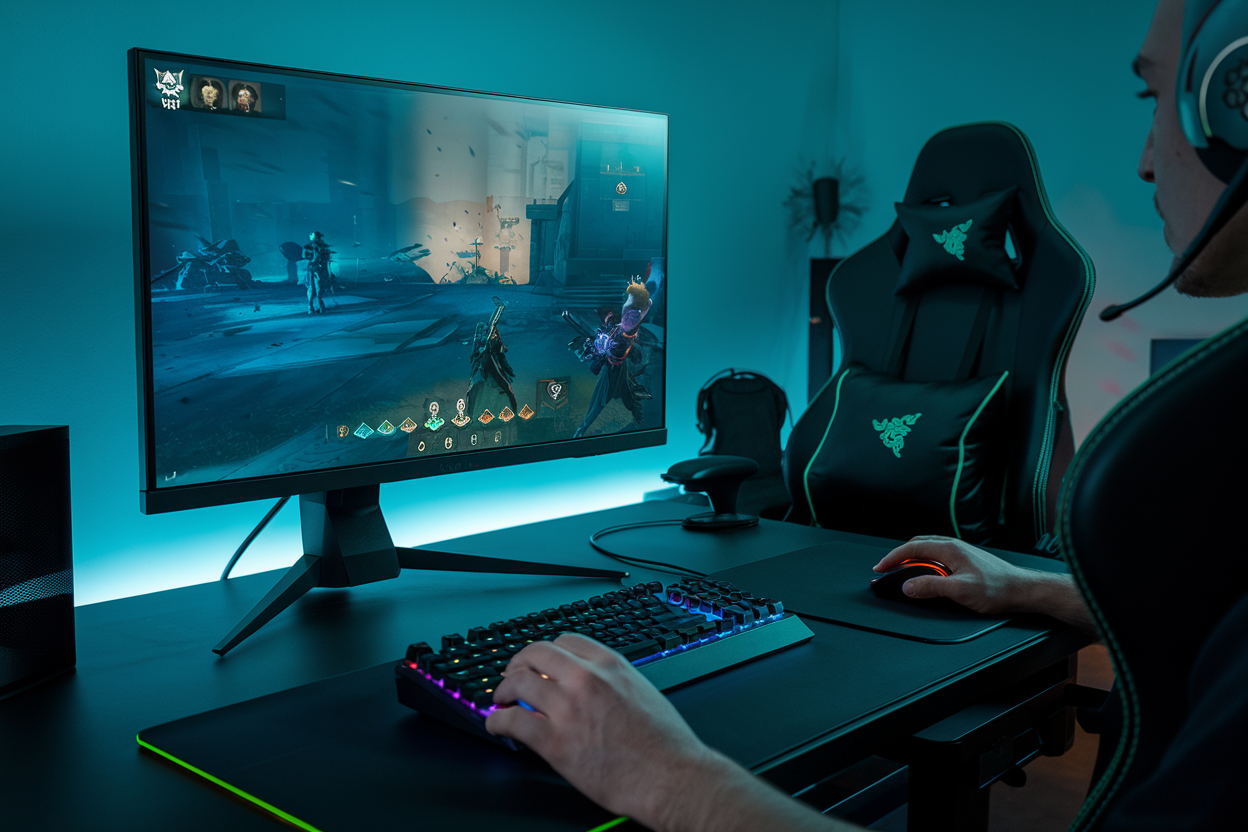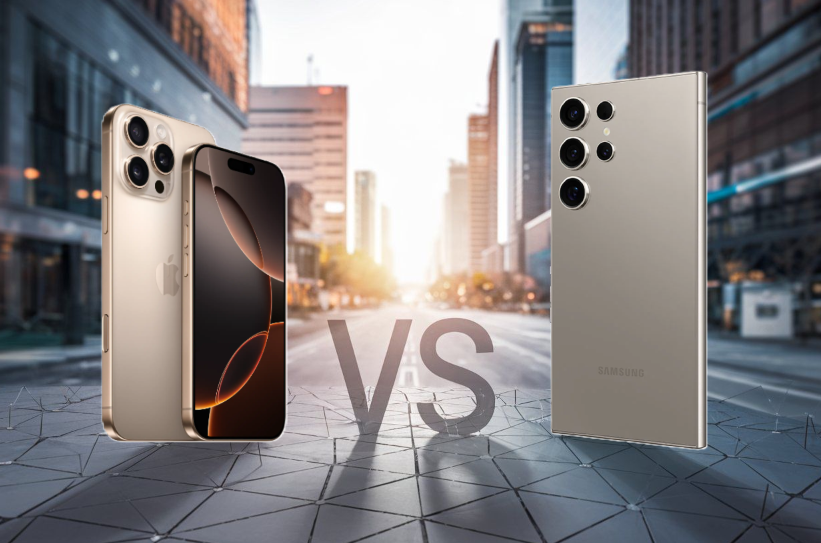The best camera phone can be either an Android or an iPhone, as both platforms offer exceptional cameras that surpass expectations of what a smartphone camera can achieve.
Our top choice for a premium Android camera, the Galaxy S24 Ultra, is incredibly versatile, akin to carrying a high-end camera with a full set of lenses.

We also highly recommend the Apple iPhone 15 Pro Max, which captures stunning photos and records some of the best videos outside of a professional Hollywood setting.
Meanwhile, the Xiaomi 14 Ultra delivers outstanding results, though its limited global availability makes it difficult to declare as the best camera phone overall.The OnePlus 12 also stands out, featuring a distinctive style enhanced by Hasselblad tuning.
Explore our top picks below, complete with image samples. For more in-depth information on each device’s camera, photo editing features, and other new advancements, check out the full reviews.
1. Samsung Galaxy S24 Ultra

Samsung Galaxy S24 Ultra: This smartphone is considered the pinnacle of camera phones in 2024 the Galaxy S24 Ultra also excels in low-light environments, making it the top pick for night photography.
The Galaxy S24 Ultra still holds the top spot as the best camera phone for its versatility. Samsung has made big improvements in image quality, making it a great choice for all kinds of photos. Compared to older Samsung models, the Galaxy S24 Ultra’s photos look more natural. Even the iPhone 15 Pro might seem less vibrant in comparison.
The 200MP main camera is back and better than ever. It now offers improved color and a wider range of brightness levels. The background blur in photos looks more natural and less artificial, and the camera gives consistent, high-quality results.
A key question is whether the 5X zoom on the Galaxy S24 Ultra is worse than the 10X zoom on the Galaxy S23 Ultra. Although you might not get as many fine details with the new Ultra, the overall photo quality has improved. The new camera reduces noise and enhances colors, making most photos look better, even with less zoom.
Samsung’s phones are known for their great shooting modes, and the Galaxy S24 Ultra is no different. The Food mode makes your meals look tasty, while the Portrait mode beautifully blurs the background to focus on your subject.
Overall, the Galaxy S24 Ultra is the camera I reach for most often because it handles any photo situation well. It continues to perform as well as its predecessor and offers more consistent results than other phones.
Specifications
- Release Date:March 2020
- Weight:222g
- Dimensions: 166.9 x 76.0 x 8.8mm
- Operating System:Initially shipped with Android 10, upgradable to Android 13
- Screen: 6.9-inch Dynamic AMOLED 2X, WQHD+ (3200 x 1440) resolution, 120Hz refresh rate
- Processor:
- Qualcomm Snapdragon 865 (in the US)
- Exynos 990 (in other regions)
- RAM: 12GB or 16GB
- Storage Options:128GB / 512GB (expandable via microSD up to 1TB)
- Battery:5,000mAh
- Rear Cameras:
- 108MP wide-angle
- 48MP telephoto with in 10x optical zoom
- 12MP ultra-wide
- TOF 3D DepthVision sensor
- Front Camera:40MP
2. Apple iPhone 15 Pro Max

Apple iPhone 15 Pro Max: The iPhone 15 Pro Max follows closely behind the Galaxy S24 Ultra. It is particularly noted for its excellent video recording capabilities and accurate color reproduction. With its 48MP main sensor and 5x optical zoom, it delivers outstanding detail and dynamic range, though it slightly underperforms in zoom compared to the S24 Ultra.
Specifications
- Display: 6.7-inch Super Retina XDR display with ProMotion technology and always-on capability.
- Processor: A17 Pro chip.
- Camera System:
- Rear: Triple 48 MP (wide) + 12 MP (ultra-wide) + 12 MP (telephoto) cameras.
- Front: 12 MP TrueDepth camera.
- Storage Options: 256 GB, 512 GB or 1 TB.
- Battery Life: Up to 29 hours of talk time or up to 95 hours of audio playback.
- Operating System: iOS 18.
- Build: Titanium frame with Ceramic Shield front cover.
- Connectivity: 5G, USB-C port , Wi-Fi 6E, Bluetooth 5.3.
- Other Features: Face ID, MagSafe, IP68 water and dust resistance.
3.Google Pixel 8 Pro

Google Pixel 8 Pro: The Pixel 8 Pro is renowned for its computational photography prowess, making it ideal for capturing stunning still images. It also offers a 5x optical zoom, but its video recording capabilities are not quite on par with those of the Galaxy S24 Ultra or iPhone 15 Pro Max.
For a budget phone, the Google Pixel 8a delivers impressive, straightforward photos that rival those from much more expensive camera phones—provided you don’t zoom in too closely.The 64MP main sensor captures images at 16MP resolution through pixel binning, combining pixel data for enhanced color and lighting.
While detailed images may suffer when zoomed in, the Pixel 8a is an excellent choice for online sharing and photo messaging.
Additionally, you can enhance old photos using Google Photos, which offers features like Magic Editor for changing backgrounds or repositioning objects, and Magic Audio Eraser for isolating background noise in videos.These advanced photography tools are a key strength of the Pixel line, and the Pixel 8a includes the same features found in Google’s higher-end Pixel 8 models.
Furthermore, Google promises seven years of Android OS updates for the Pixel 8a, ensuring longevity for this capable camera phone.
Specifications
- Display: 6.7-inch LTPO AMOLED, 1440 x 3120 pixels, 120Hz refresh rate
- Processor: Google Tensor G3
- RAM: 12GB
- Storage Options: 128GB, 256GB, 512GB
- Rear Cameras:
- 50 MP (wide) with optical image stabilization (OIS)
- 48 MP (ultra-wide) with 125.8° field of view
- 48 MP (telephoto) with OIS, 5x optical zoom
- Front Camera: 10.5 MP
- Battery: 5000mAh with fast charging, wireless charging, and reverse wireless charging
- Operating System: Android 14
- Build: Aluminum frame,
- Gorilla Glass Victus 2 front and back.
- Dimensions: 162.5 x 76.6 x 8.8 mm
- Weight: 213 grams
- Connectivity: 5G, Wi-Fi 6E, Bluetooth 5.3, NFC
4.Xiaomi 14 Ultra

Xiaomi 14 Ultra: This device is a powerful contender, especially appealing to those who value ultra-high-resolution photography. Equipped with a 1-inch main sensor, the Xiaomi 14 Ultra provides exceptional detail and dynamic range, especially in bright conditions.
With a main camera sensor much larger than its competitors, a wide, adjustable aperture, and Leica-designed optics, the Xiaomi 14 Ultra captures some of the best images we’ve seen from a smartphone.
Its impressive dynamic range and clarity in raw files allow for photos comparable to those taken with full-sized mirrorless cameras.
We especially enjoy using the 14 Ultra’s Leica high-contrast black-and-white mode for striking monochrome street photos that look fantastic straight out of the camera, without needing any editing.
To enhance the experience, Xiaomi offers a Photography Kit that includes a case and grip with physical camera controls. This kit transforms the phone into a more traditional camera, making it a true pleasure to use.
Specifications
- Display: Likely a high-resolution AMOLED or OLED screen, possibly with a 120Hz refresh rate.
- Processor: High-performance chipset, possibly the latest Qualcomm Snapdragon series.
- RAM and Storage: High configurations, such as 12GB of RAM and multiple storage options up to 1TB.
- Camera: Advanced camera system with multiple lenses, including wide, ultra-wide, and telephoto lenses. High megapixel counts.
- Battery: Large battery capacity with fast charging support, possibly around 5000mAh or more.
- Operating System: MIUI based on the latest version of Android.
- Additional Features: 5G support, high-resolution audio, and possibly advanced cooling systems.
5. iPhone 15

iPhone 15: The iPhone 15 showcases a refined design with a titanium frame, a larger and more vibrant Super Retina XDR display, and boosted performance thanks to the A17 Pro chip. It enhances photography with advanced computational features and supports USB-C for quicker data transfer and charging. Additionally, it includes the Dynamic Island, Crash Detection for safety, and extended battery life.
The iPhone 15 still has two rear lenses, but they’re different from the iPhone 14’s. The 12MP ultrawide lens remains the same, but the main camera has been upgraded to a 48MP sensor, similar to the one on the iPhone 14 Pro (though it’s not the same as the one in the iPhone 15 Pro and iPhone 15 Pro Max).
This is a big improvement over the iPhone 14’s 12MP main camera. The cameras use the A16 Bionic chip and enhanced image processing for better photos and new features.
You can still shoot great videos up to 4K at 60 fps, and Cinematic mode lets you choose and change the focus on your videos.
Low-light photos are good, and the 12MP TrueDepth lens takes excellent selfies, which you can easily turn into portrait mode.
Overall, this is the best camera setup we’ve seen on a non-Pro iPhone.
It doesn’t have the advanced telephoto and macro features of the Pro models, but it offers great quality for its price.
Specifications
- Display: 6.1-inch Super Retina XDR display with Dynamic Island and Ceramic Shield.
- Processor: A16 Bionic chip.
- Camera System:
- Rear: Dual 48 MP (wide) + 12 MP (ultra-wide) cameras.
- Front: 12 MP TrueDepth camera.
- Storage Options: 128 GB, 256 GB, 512 GB.
- Battery Life: Up to 20 hours of talk time or up to 75 hours of audio playback.
- Operating System: iOS 18.
- Build: Glass front and back with aluminum frame.
- Connectivity: 5G, USB-C port , Wi-Fi 6E, Bluetooth 5.3 .
- Other Features: Face ID, MagSafe, IP68 water and dust resistance.
OnePlus 12

OnePlus 12: The OnePlus 12’s camera system is tailored for a particular type of photographer, evoking the spirit of Hasselblad—the revered optics once used by astronauts exploring space. OnePlus has embraced this aesthetic wholeheartedly, and it permeates every pixel of their latest phones.
However, it’s important to set expectations: if you’re looking for stunning telephoto shots or extreme close-up macro photography, the OnePlus 12 might not be the best choice. Its longest lens offers just 3x magnification, which falls short compared to the 5x lens on Samsung’s Galaxy S24 Ultra.
Where the OnePlus 12 truly excels is in portrait and landscape photography. Its images boast a richness and naturalness that surpass both the iPhone and Pixel. While Apple and Google focus on accuracy and realism, the OnePlus 12 captures moments with the artistic flair of a prime photography lens, elevating your photos beyond simple documentation.
Specifications
- Operating System:OxygenOS based on Android 14
- Build:Glass front and back, aluminum frame
- Type:Fluid AMOLED
- Size:6.7 inches
- Resolution:1440 x 3216 pixels (QHD+)
- Refresh Rate:120 Hz
- Protection:Corning Gorilla Glass
- Chipset: Qualcomm Snapdragon 8 Gen 3
- CPU: Octa-core (up to 3.2 GHz)
- GPU:Adreno 750
- RAM:12 GB or 16 GB
- Internal Storage:256 GB or 512 GB
- Expandable Storage: No
- Primary: 50 MP, f/1.8, (wide), OIS
- Ultra-Wide: 48 MP, f/2.2
- Telephoto: 50 MP, f/2.8, 3x optical zoom
- Front Camera: 32 MP, f/2.4
- Capacity:5000 mAh
- Wired: 100W fast charging
- Wireless: 50W fast wireless charging
This blog was written before the release of the iPhone 16

























